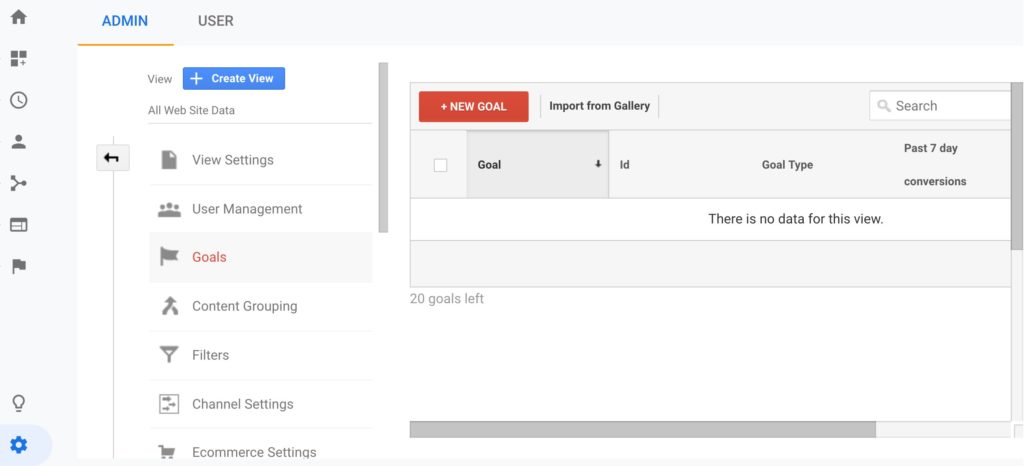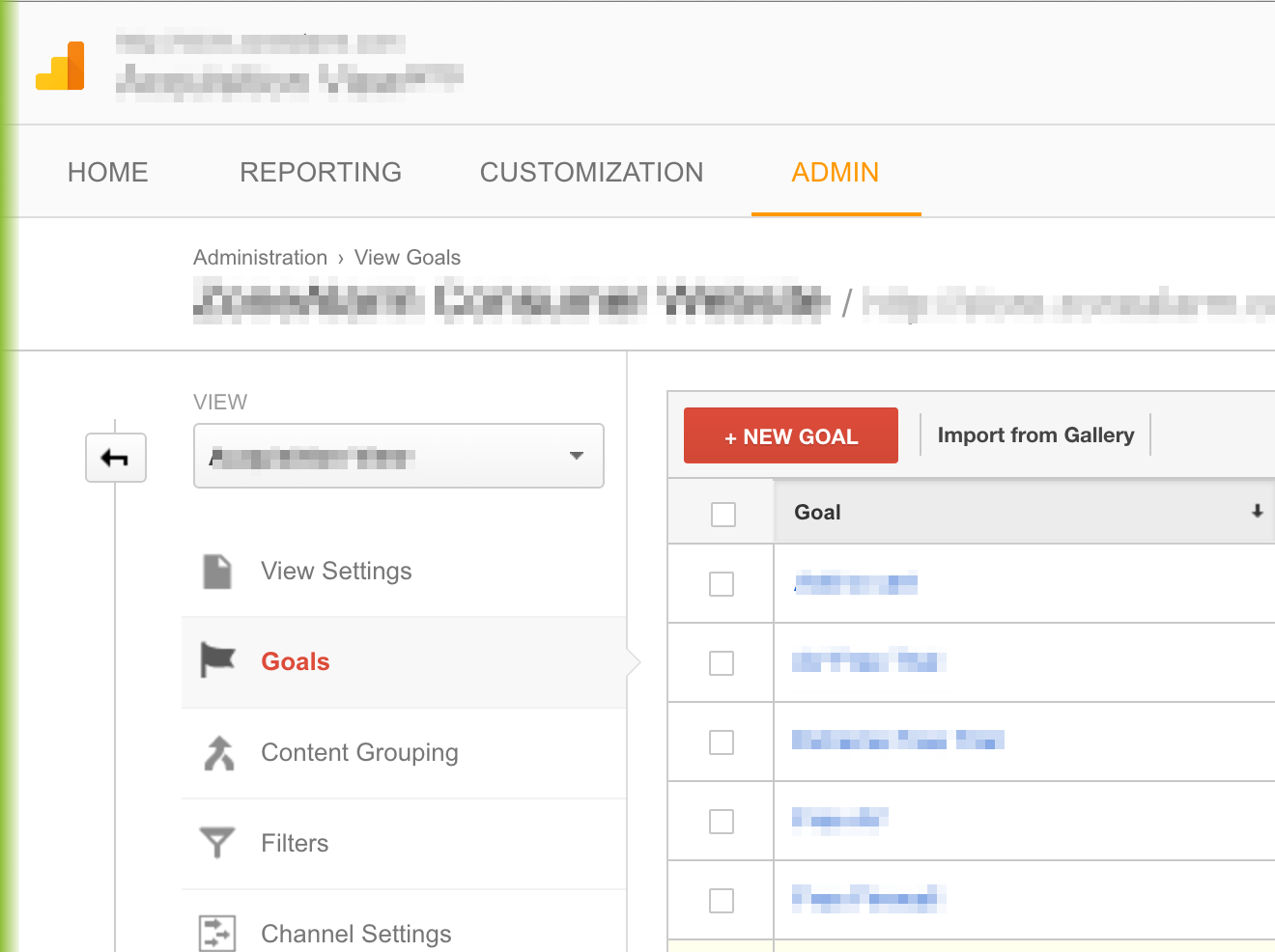What Data Is Google Analytics Goals Unable to Track: Learn the Limitations
What Data Is Google Analytics Goals Unable to Track: Learn the Limitations
Blog Article
Discover the Limitations of Google Analytics Goals: Introducing the Data Types That Remain Untrackable
As organizations increasingly depend on data-driven decision-making, recognizing the limitations of tools like Google Analytics ends up being vital. While Google Analytics Goals deal valuable insights into customer communications, there exist data kinds that elude tracking, posturing challenges to a detailed understanding of customer actions.
Insufficient Individual Trip Tracking
Incomplete user trip monitoring within Google Analytics can prevent the ability to accurately evaluate individual habits. When the individual journey is not completely tracked, there are spaces in the data that avoid a detailed understanding of just how customers connect with a website. This absence of understanding can lead to missed possibilities for optimization and renovations to the customer experience.
One common concern with insufficient individual journey tracking is the failure to see the complete path that users take before completing a goal or leaving the website. Without this details, it is testing to recognize where individuals may be encountering barriers or rubbing points that prevent them from transforming. In addition, incomplete tracking can cover the effect of certain advertising and marketing initiatives or web site adjustments on user behavior.
To address this constraint, it is crucial to set up appropriate tracking systems within Google Analytics to capture the whole individual trip. This may involve establishing up event tracking, goal funnels, or using tools like Google Tag Manager to guarantee that no vital interactions go unrecorded. By gaining a thorough view of the customer journey, internet site owners can make even more informed decisions to boost individual involvement and drive conversions.
Attribution Obstacles
Browsing via acknowledgment challenges in Google Analytics requires a thorough understanding of how different touchpoints add to the general conversion procedure. Acknowledgment obstacles occur from the complexity of contemporary client trips, where customers interact with multiple channels before converting.
One typical acknowledgment challenge is the difficulty in associating conversions to the correct source, especially in cases where users connect with multiple channels before converting. This can bring about inaccuracies in identifying which advertising efforts are driving the most conversions. In addition, cross-device monitoring presents one more attribution obstacle, as customers often switch in between gadgets during their trip, making it challenging to track their interactions flawlessly. Marketing professionals should thoroughly analyze and examine attribution information to make educated decisions and maximize their advertising techniques effectively.
Offline Conversions
Provided the difficulties associated with associating conversions accurately in online channels, the dimension of offline conversions presents a considerable possibility for marketing experts seeking a much more comprehensive understanding of their clients' trip. Offline conversions refer to actions that customers take in the physical world, such as making acquisitions in brick-and-mortar shops or over the phone, attending events, or involving with published materials - what data is google analytics goals unable to track. These conversions are vital for businesses that operate both online and offline, as they supply valuable insights into the performance of marketing projects throughout different touchpoints
Tracking offline conversions typically posed a substantial obstacle for marketing experts, as it was testing to link these activities back to particular online communications go to my site precisely. However, with advancements in modern technology, such as the assimilation of CRM systems, unique identifiers, and discount coupon codes, organizations can now link the gap between online and offline information to acquire an extra holistic view of client behavior. By properly gauging offline conversions, marketers can optimize their approaches, allot sources much more efficiently, and inevitably improve the overall customer experience.
Cross-Device Tracking
Cross-device monitoring plays a vital role in recognizing the interconnected nature of customers' digital communications across numerous devices. In today's omnichannel globe, where users flawlessly change in between desktop computers, smartphones, and tablet computers, tracking their habits throughout these tools is vital for marketers to obtain a detailed view of their client trip.

Additionally, personal privacy concerns and guidelines such as GDPR and CCPA have better challenging cross-device monitoring. With users requiring even more control over their information and raised limitations on tracking modern technologies, online marketers should discover innovative and privacy-compliant methods to attach customer interactions throughout tools.
Dynamic Web Content Interaction
Comprehending customer interaction with vibrant material is pivotal in optimizing digital marketing strategies for enhanced target market communication. Dynamic material refers to website elements that transform based on user actions, choices, or other factors, using a customized experience. Tracking user interactions with dynamic web content positions difficulties for traditional analytics devices like Google Analytics.
While Google Analytics can track basic communications like clicks and page views, it might struggle to record even more nuanced engagements within dynamic material. what data is google analytics goals unable to track. Metrics such as time spent on specific dynamic elements, float actions, or communications within pop-ups are often not conveniently quantifiable using standard monitoring methods. This constraint impedes marketing professionals' capability to fully realize exactly how customers are involving with navigate to these guys dynamic material and customize their techniques appropriately

Verdict
Finally, Google Analytics goals have restrictions in tracking incomplete individual trips, connecting conversions precisely, recording offline conversions, tracking cross-device communications, and measuring dynamic material involvement. These restraints highlight the significance of checking out extra monitoring techniques and devices to get a much more thorough understanding of user habits and conversions beyond what Google Analytics can offer.
While Google Analytics Goals deal valuable understandings into customer communications, there exist data types that elude tracking, posing obstacles to a comprehensive understanding of user actions.Insufficient individual journey monitoring within Google great post to read Analytics can prevent the capability to precisely analyze customer behavior. When the customer trip is not completely tracked, there are gaps in the information that protect against a detailed understanding of exactly how users communicate with a web site.One typical issue with insufficient individual journey monitoring is the failure to see the full course that individuals take before finishing an objective or leaving the site. By gaining a thorough sight of the individual journey, internet site proprietors can make more educated decisions to enhance user interaction and drive conversions.
Report this page